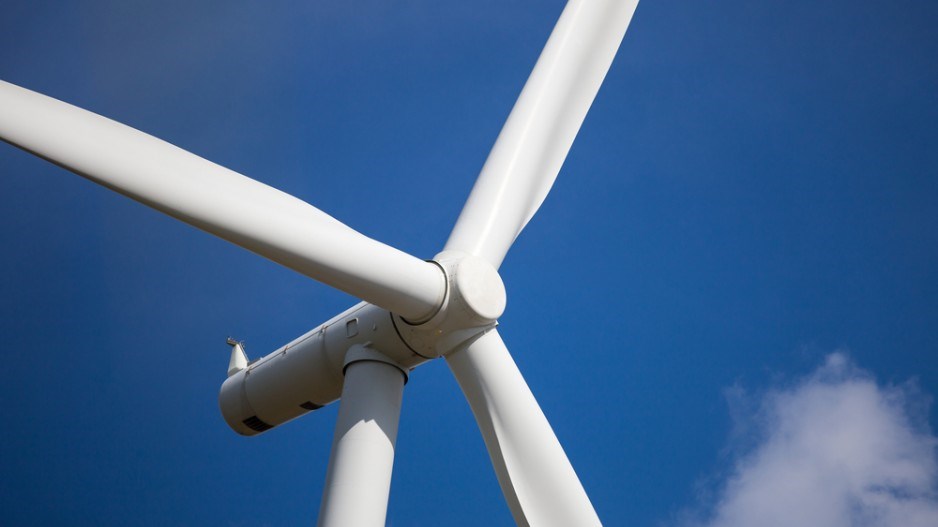The future of two “shovel-ready” wind projects near Tumbler ridge – a town reeling from mine closures – are unclear after last week’s approval of the Site C dam megaproject.
The district of Tumbler Ridge is urging BC Hydro to buy electricity from two proposed wind farms—the Thunder Mountain and Sundance Wind projects—that have been shelved due to limited demands for power.
District officials say the projects would provide desperately needed jobs for the community of 2,700, which is still reeling from a rash of mine closures earlier this year.
But how much electricity BC Hydro will buy from private companies, either before or after construction of the 1,100 megawatt dam, is not clear.
"We're concerned not so much about Site C proceeding, but its effect on wind power," Tumbler Ridge Chief Administrative Officer Barry Elliott told Alaska Highway News.
The district is working to secure meetings with the power authority, in hopes of convincing them to sign agreements with producers that have projects proposed in the Tumbler Ridge area.
Lack of demand is the only thing keeping wind turbines from going up on two projects, he said, adding that additional projects are at earlier stages.
The furthest along is Pattern Development's Meikle Wind project, which recently signed a 25-year energy purchase agreement with BC Hydro and expects to start construction in 2015.
But both Brookfield Energy and EDF-EN have put plans for 250 megawatt, $600 million wind farms near Tumbler Ridge on hold.
"Tumbler Ridge is facing uncertainty with the shutdown of two coal mines and with a third coal mine scheduled to shut down at the end of December," Elliott wrote in a letter to BC Hydro boss Jessica McDonald. "There are alternative energy projects that are shovel ready with the only impediment being the limited calls for power by BC Hydro."
Each project would create 250 construction and ten permanent jobs.
"It's not a lot of jobs long term, but it's jobs during the construction phase," said Tumbler Ridge mayor Don McPherson. "But there's no call for power right now, and that's what's holding them back."
The Tumbler Ridge projects underscore tensions between BC Hydro and private companies that sell electricity to the utility.
"There's definitely frustration with the independent power producers (IPPs) that very few power purchase agreements have gone to IPPs recently," said Jordan Wall, Tumbler Ridge's economic development officer. "If there isn't any call for power, they're worried IPP industry in B.C. will leave for greener pastures."
Peace River South Mike Bernier said that Site C won't eliminate the need for independent producers.
"This actually opens the door for further IPPs," he said. "Site C will be the last dam built in British Columbia. As we go forward, to meet the energy demand, that means IPPs."
He added building the dam would create hundreds of construction jobs that many laid off miners would qualify for.
Hydroelectric power currently provides around 90% of the province's power, while wind generates roughly 2%.
According to Hydro's latest numbers, independent power producers supply 16,585 gigawatt hours of energy per year, out of a systemwide 48,000.
A spokesperson for BC Hydro said the company's latest plan "doesn't specifically call for a new large energy procurement process," but that the utility has left the door open "for exploring clean, renewable sources like wind to supply electricity if future demand is higher than anticipated."
Two existing windfarms near Tumbler Ridge currently produce around 330 megawatts of electricity.
The provincial government has announced it would build a third dam on the Peace River at Site C. Premier Christy Clark said the dam would lock in low energy rates for the next century.
Construction on the $8.8 billion dam is slated to start in summer 2015.
However, the project faces numerous legal challenges from landowners and First Nations groups.




